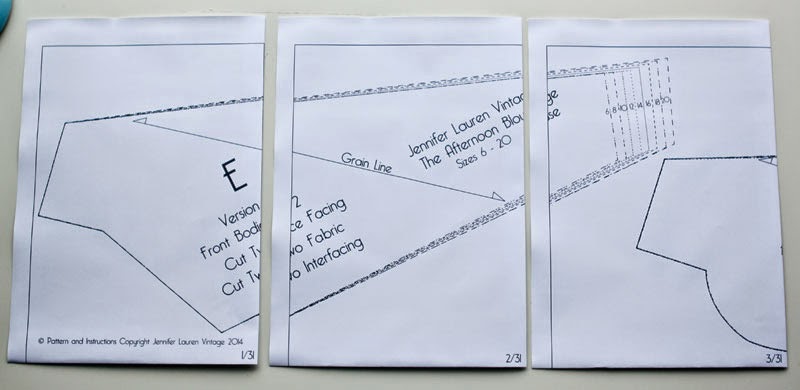In an attempt to break up all the
Afternoon Blouse spam on my blog lately, I thought I should show off a newly finished sewing project and perhaps do a little sneaky giveaway while I was at it.
It has officially started getting cold here - the days are shorter, the leaves are turning, I've pulled out my knitting again and I can feel myself leaning towards darker colours and snuggly, comfortable outfits that work well with tights and a cardigan. Cue,
Winifred (and my smurf legs!).
Winifred is
Abby's newest pattern - a cute variation on a shirt waist dress, except that this one is probably way faster to make up than any shirtwaist dress I've ever seen. I do love the classic button-up version, but they can take a while, what with all them buttons. Winifred however, has no fastenings what so ever, you just pop her on over your head, throw on your favourite coloured tights and you're ready to go play in the autumn leaves.
So, what's the trick? She has a comfortable elasticated waist at the back. Perfect for expanding tummies around lunch and dinner time (and Easter time, let's be honest here. I've probably already eaten my fair share of chocolate eggs over the last few weeks).
I made my Winnie (as
Caitlan and I have affectionately called her) from a chocolate brown suiting cotton I picked up from my favourite charity haunt a few weeks ago (I got a huge roll of it for about $5). The fabric drapes beautifully but has a lovely weight which makes it the perfect fabric for my autumn version of Winnie.
There are two things I'd watch out for with this pattern though, both of which tripped me up when I was making it. The first are the sizings on the back. I really had no idea what size waist I should be cutting out because the sizings listed are big. I ended up cutting out a straight size 8 because that was my bust size (and I figured that my waist is really nowhere near 34 inches which is the size that corresponds to the 35inch bust, even after all those easter eggs).
Erm, wrong! The dress fit, but only because of the bigger back piece (due to the elastic). Instead of having side seams though, the front was so small around my waist and hips that I had front/hip seams! I gather the 34 inch waist is actually the finished garment waist size (?), sans elastic, but not taking into account that the front is fitted and doesn't have any elastic... So, I ended up cutting a second front and graded out one size at the waist and two at the hips to accomodate my big ol' lower half.
Even now, the skirt side seams are sitting forward a bit but not nearly as much as they were in my previous attempt. With the drape of the skirt, I kinda think they look like extra pleats, so I'm going with it. And I actually quite like it.
So, the lesson here? Measure your pattern pieces, and email Abby if you're not sure (as I didn't!!).
The second thing I'd point out is the collar instructions. I found them a tiny bit confusing at the end when it comes time to finishing the inside raw edges of the collar. Basically it's up to you how you finish it, but if you've never attached a collar before, it could leave you feeling a little puzzled. I would consider myself reasonably okay at sewing, but even then, I muddled through a bit (I've never actually inserted a collar before though). I still don't know if it's quite right quite, I inspected one of David's shirts to see how it was done and I've given mine a grade of 'passable'. I ended up folding the bottom raw edges of the back of the collar under and hand stitched them in place for a clean inside finish.
But even with these things, I'll definitely still be wearing my Winnie a tonne over winter.
Other small changes I made were to use a smaller width elastic and binding on the back (13mm binding and 7mm elastic), lower the placement of the back elastic by an inch and leave off the faux belt, lower the bottom of the darts by 1/4inch and lengthen the darts by about 1/2inch all up. I top stitched around the entire collar and neckline and opted to sew in my sleeve hems flat before sewing up the side seams. I also took my hem up by about 2 inches to a length I prefer to wear and for my next Winnie, I'll lower the neckline opening as well, as it's a tiny bit hard to get my head through as it currently is (it's no biggie though, I just can't do my hair before I get dressed!).
*Thank you all so much for entering, the competition is now closed*
Win your own Winnie!
I'll definitely be making another Winnie soon, and you can too! To celebrate the release of Winifred,
Indie Stitches and I are giving away a copy of the pattern to one of you lucky folk! All you have to do to enter the giveaway is leave a comment below and you're entered.
The competition is open world wide and will be drawn at random in two weeks time (Monday 28th April NZ time). The winner will be contacted by email.
Stay tuned this week for more
Afternoon Blouse fun :)
xx
Jen

























































